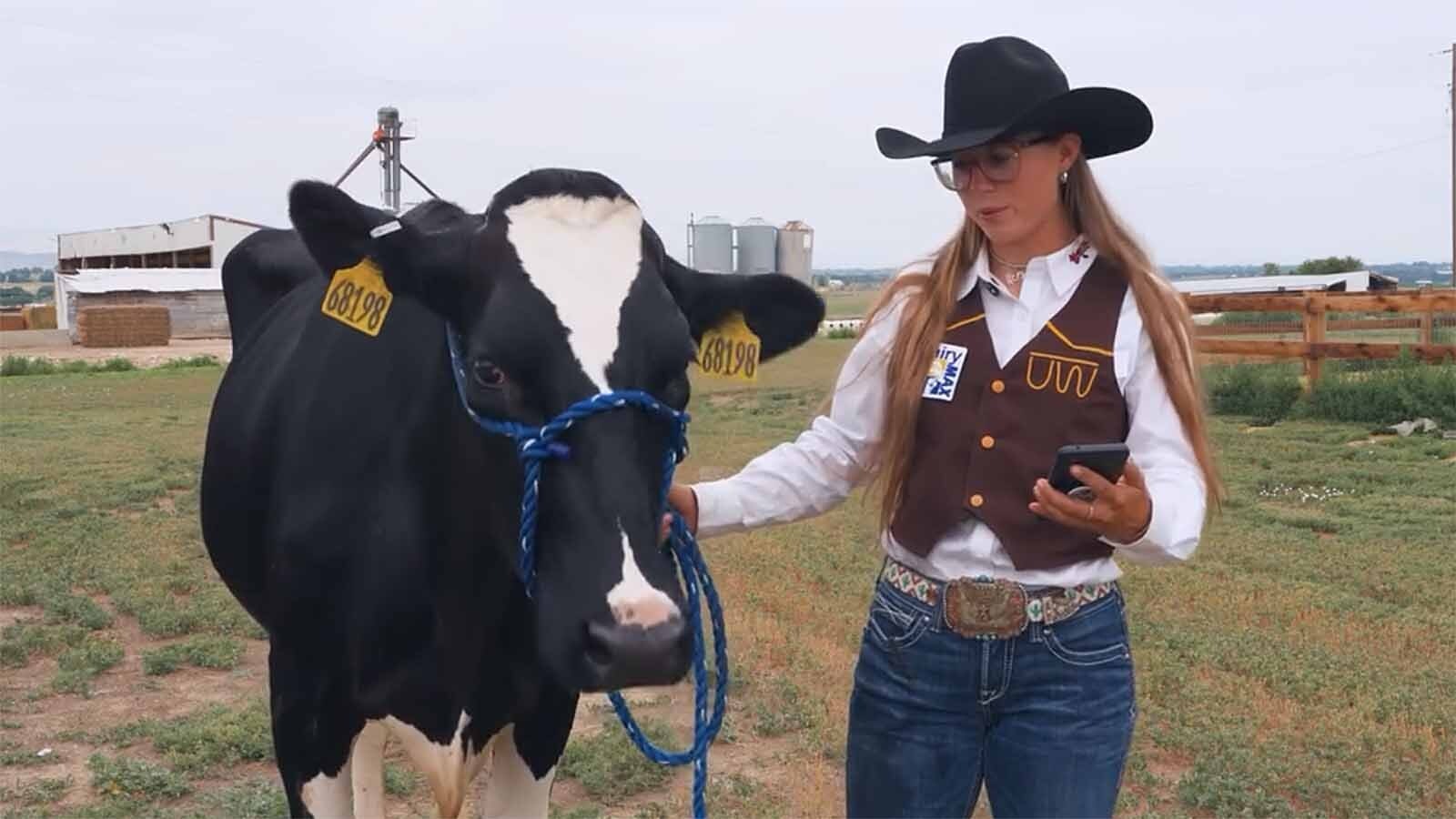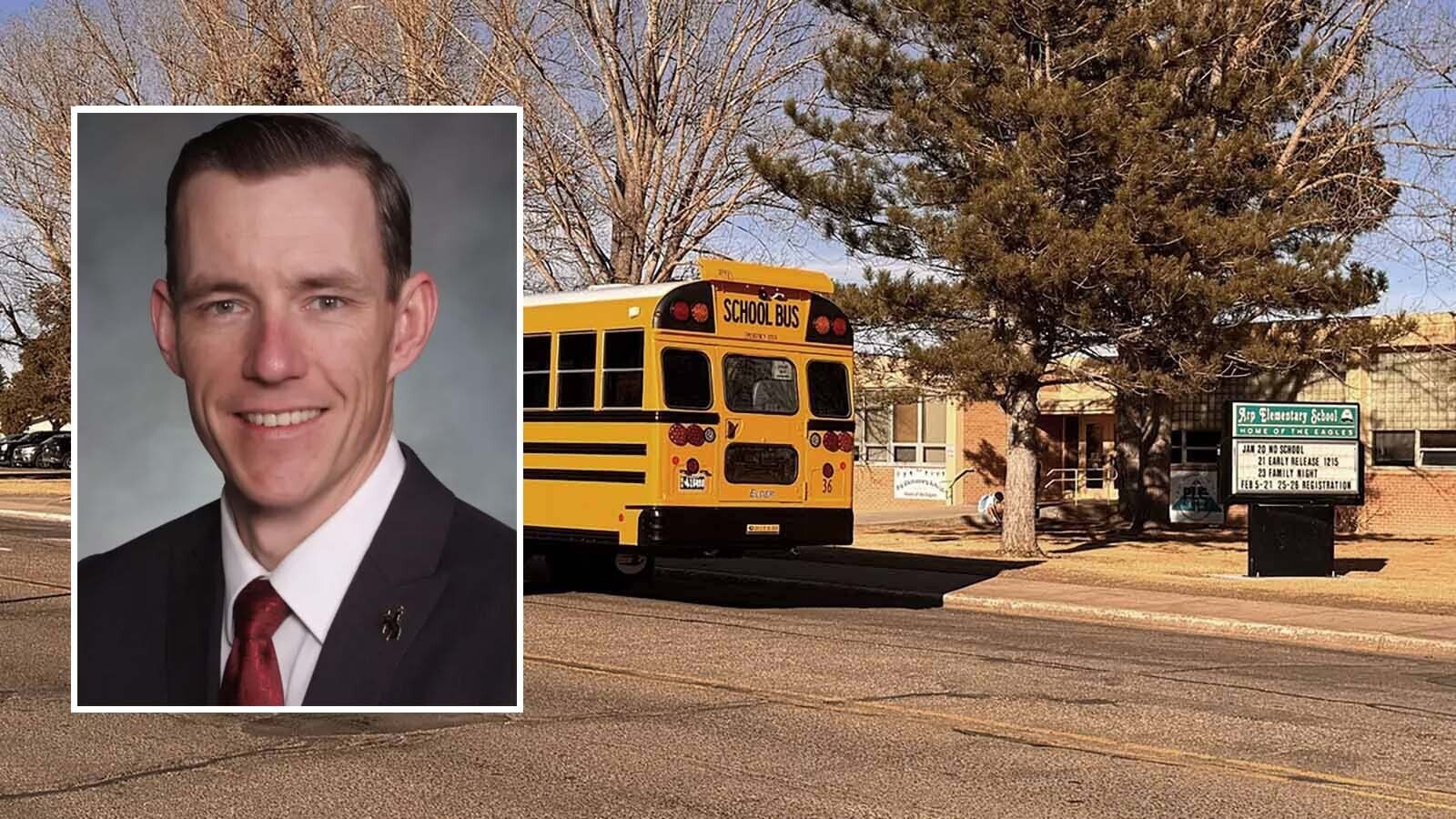CHEYENNE — In an unincorporated part of western Laramie County known as Horse Creek, landowner Ryan Schneider is worried about Wyoming’s earthworms.
He believes wind turbines create vibrations that could potentially lead to the displacement of earthworms, making them easy prey for birds and other predators. He said the vibrations may eventually erode the soil from a lack of oxidization from the earthworms.
“Huge swaths of land [will] be losing this crucial aeration creature,” Schneider told Laramie County officials last week. “That’s been a concern of mine. I’m not a farmer myself, but I do support my neighbors who are — and ranchers — and this has been on my mind.”
Schneider relayed these concerns to the Laramie County Planning Commission, where he was one of among roughly 100 community members who gathered to share their thoughts on the proposed Laramie Range Wind Project, which would bring as many as 170 wind turbines to the area.
While others expressed concerns about the turbines becoming an eyesore or harming birds, Schneider argued the turbines could have a much lesser-seen impact.
While seemingly strange, Schneider’s concerns have their backing in science. The concern is one that Laramie County’s commissioners may consider during their meeting Tuesday, when they’re scheduled to discuss the project.

What About The Worms?
A 2021 study by researchers at the Netherlands’ Vrije Universiteit Amsterdam found vibrations created by wind turbines negatively affected “earthworm abundance.” While the vibrations are not hazardous to humans, they have a significant impact on small animals living in the soil, such as earthworms.
“Larger soil animals, such as earthworms, are particularly likely to be impacted by the low-frequency turbine waves that can travel through soils over large distances,” the study reads. “Earthworms, for instance, are considered to be crucial ecosystem engineers and an impact on their abundance, survival and reproduction may have knock-on effects on important processes such as water filtration, nutrient cycling and carbon sequestration.”
Continuous vibrations in the ground created by spinning turbine blades decreased in intensity the farther away from the turbine they were measured, the researchers wrote.
Distance from a turbine, they noted, was a reliable predictor of the number of earthworms that could be found in an area, with a majority of worms being located away from the turbines.
“We found that, on average, the number of earthworms decreased by 40% at the point furthest away from the turbines compared to the closest point to the turbines where we measured,” researchers wrote. “Our results confirm that earthworm abundance decreased substantially as the amplitude of vibrational noise increased.”
The study was cited by 30 other groups of researchers who conducted similar studies on the impacts of wind turbines on other animals.
Michelle Weschler, a research scientist with the Wyoming Natural Diversity Database, said she cited the study in her own research on how turbines in Southeast Wyoming impact insects. She explained the research could help scientists understand the impact of vibrations on other insects that nest underground.
“It’s basically suggesting that earthworms are moving away from or avoiding turbines because of those increased vibrations in the ground,” she said. “We think that’s pretty interesting.”
Other Bugs
Weschler was one of several University of Wyoming researchers who published a paper last year examining the relationship between wind energy and insects. That paper specifically examined impacts on above-ground bugs like bees and butterflies.
Weschler told Cowboy State Daily she observed that the bright white color of turbines attracted some insects toward them. She also said the warmth given off by turbines may appeal to insects searching for shelter.
These observations, she said, appeared to prove that turbines present a hazard to several common insect behaviors.
“We theorized that things like high altitude migration, like what monarchs do, could put insects at risk of flying into turbines,” Weschler said. “Or things like mating in the air, which some species of flying insect do, could also put them at risk.”
Weschler added that turbine vibrations can also impact nearby flowers and the way they produce pollen. This, she said, could impact a flower’s genetics and could even alter the way insects interact with them.
Other larger animals, Weschler said, could also experience downstream effects from anything impacting bugs. Mule deer and pronghorn rely on pollinators to help cultivate the plants they eat while bats and birds also rely on a stable population of flying insects for food.
“Insects are vitally important to so many systems, both natural systems and human-made systems,” she said. “They all have their place in making sure plant life thrives which has impact on cattle.”
“[Bugs are] pretty central to so much in the ecosystem,” she added.
Public Hearing
Members of Laramie County’s Board of Commissioners on Tuesday will hear public comments on the Laramie Wind Range Project as community pushback toward the project grows. The commission will ultimately get the final say in whether the project is permitted to proceed.
A lengthy public comment session at last week’s county Planning Commission meeting ultimately ended in the members agreeing to postpone a vote on the project. That body has no authority, except to make recommendations to the county commissioners.
Project lead Charlie Banke spoke at that hearing and touted what he said was Spanish energy giant Repsol's positive track record of selecting other project sites throughout the U.S. He also detailed the company’s transparency and community philanthropy efforts.
Some community members in attendance gave audible scoffs at Banke’s remark.
Others, such as landowner Charlie Farthing, said the project would provide much-needed income that would help his fifth-generation ranch survive an ongoing drought.
“We’ve got a saying in the country: ‘Don’t criticize the farmer because he’s the one that feeds you,’” he said.
Tuesday’s Board of Commissioner’s meeting begins at 3:30 p.m. at the Historic Courthouse Building in Cheyenne. Attendees can also join the meeting virtually via a link on the Laramie County website.
Jackson Walker can be reached at walker@cowboystatedaily.com.





